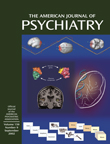Differential Effect of Environmental Adversity by Gender: Rutter’s Index of Adversity in a Group of Boys and Girls With and Without ADHD
Abstract
OBJECTIVE: This study examined the effect of gender in mediating the association between environmental adversity and the risk of attention deficit hyperactivity disorder (ADHD) and associated impairments. METHOD: The authors studied 280 ADHD and 242 healthy comparison probands of both genders who were between the ages of 6 and 17 years. They tested the association between Rutter’s indicators of adversity (including family conflict, social class, family size, maternal psychopathology, and paternal criminality) and ADHD, comorbidity, and functioning. RESULTS: Greater levels of environmental adversity were associated with a greater risk for ADHD and other comorbidity in both genders in a dose-dependent fashion. However, learning disability and global functioning were modified by gender, with more detrimental effects observed in boys than in girls. Low social class, maternal psychopathology, and family conflict were significantly associated with psychopathology and functional impairment in the probands, with control for gender, parental ADHD, proband ADHD status, and maternal smoking during pregnancy. CONCLUSIONS: Psychosocial adversity in general and low social class, maternal psychopathology, and family conflict in particular increased the risk for ADHD and associated morbidity independently of gender and other risk factors, but gender modified the risk for adverse cognitive and interpersonal outcomes; boys were more vulnerable to the disorder than girls. Because of the difficulties in separating the effects of genetics from environment, these results must be interpreted as provisional until confirmation from twin and adoption studies.



